How Does the Color Consistency Reflect Balloon Quality?
Does inconsistent balloon color drive you crazy? It indicates poor manufacturing. This blog explores how color consistency proves a balloon's quality.
Poor color consistency1 often signals underlying issues in materials or manufacturing. High-quality balloons show uniform color within a batch. This reflects precise pigment control2 and advanced production processes3. Consistent color guarantees aesthetic appeal4 and product reliability5.
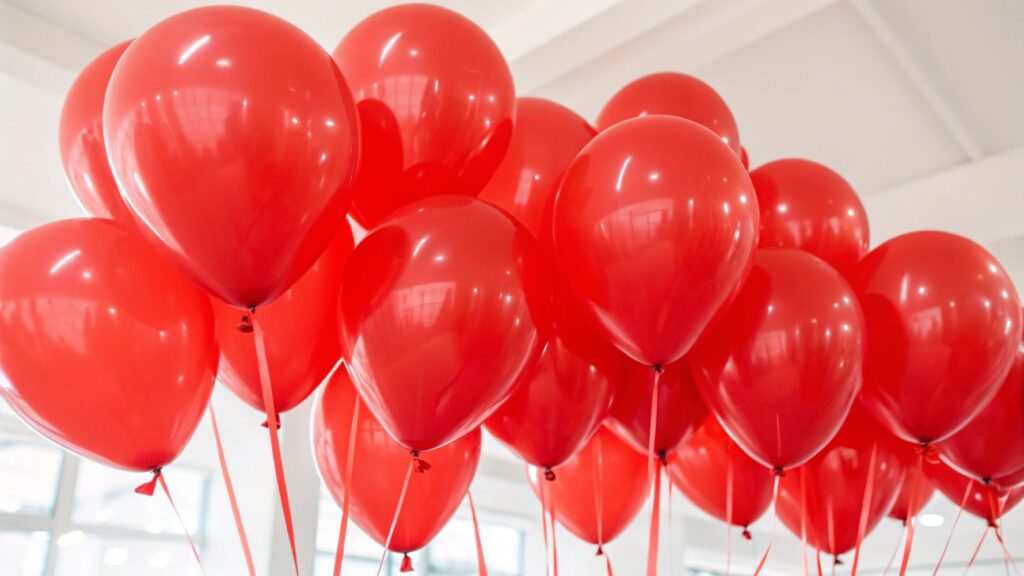
Color consistency is very important for many reasons. An organized production process is needed for consistent colors. Without this, balloons will not look good. Poor color consistency indicates an unorganized company.
How do manufacturing processes influence balloon color uniformity?
Do you know how balloon manufacturing works? It directly affects color uniformity. Any mistakes in the process show up in the final balloon colors.
The manufacturing process is very important for balloon color uniformity. Small errors during production lead to big color differences. This means the finished balloons will not look uniform.
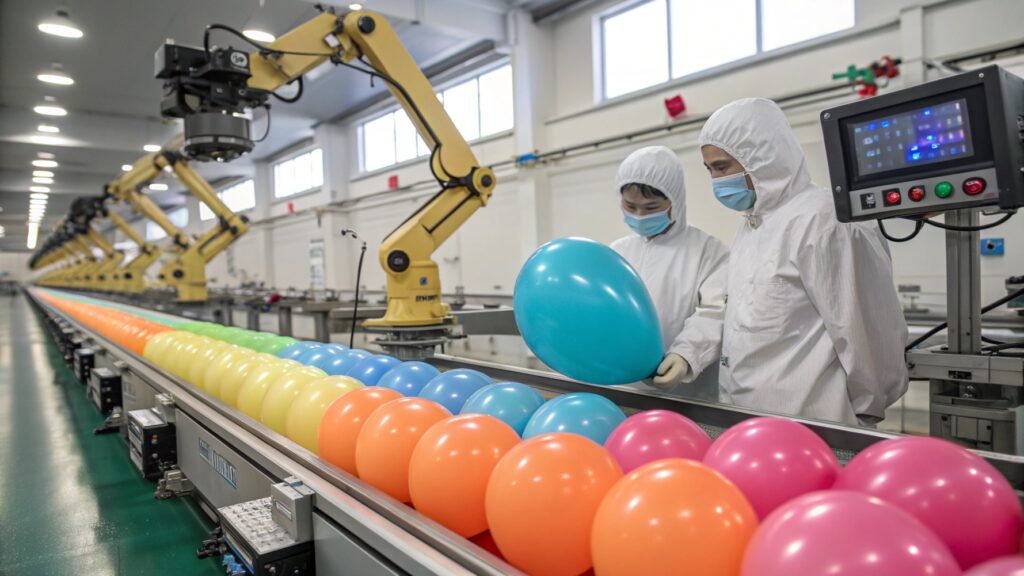
Manufacturing processes need to be very precise. This starts with mixing raw materials. It involves several steps. Each step must be controlled tightly. I have seen many production lines. The best ones have controls at every stage.
Key Factors in Manufacturing for Color Uniformity
- Raw Material Blending: This is the first step. Latex or foil materials are mixed with pigments. The mixing must be even. If not, some parts will have more color. Other parts will have less. This creates streaks or spots on the balloon.
- Pigment Dispersion: Pigments need to be spread throughout the material. High-speed mixers are used. They break down pigment clumps. They distribute the color evenly. If pigments are not dispersed well, colors will look patchy.
- Machine Calibration: The machines that form the balloons need correct settings. This includes temperature and pressure. Wrong settings can affect color. For example, too much heat might burn pigments. This changes the color. Too little heat might not cure colors properly. Colors might fade fast.
- Curing Process: After forming, balloons are cured. This sets the material and color. The curing time and temperature must be exact. If curing is too short or too long, colors will not be stable. They might look dull or change over time.
- Quality Control Checks: Inspections happen at every stage. Workers check color samples. They compare them to standards. Any deviation is corrected immediately. This prevents large batches of bad balloons.
| Process Step | Impact on Color Uniformity | Risk of Inconsistency |
|---|---|---|
| Raw Material Blending | Ensures even distribution of latex and pigment. | Streaks, uneven color saturation |
| Pigment Dispersion | Prevents pigment clumps. Spreads color uniformly within the material. | Patchy color, visible spots |
| Machine Calibration | Controls temperature, pressure. Affects how color binds to material. | Fading, off-color shades |
| Curing Process | Sets color permanence. Ensures color stability and prevents quick fading. | Dull colors, color changes over time |
| Quality Control | Identifies deviations early. Compares actual color to standard. Corrects issues immediately. | Large batches of inconsistent product |
What role does pigment quality6 play in the consistent coloration of balloons?
Do you ever wonder what gives balloons their vibrant colors? It is the pigments. The quality of these pigments is very important. It affects how consistent the balloon colors are.
Pigment quality is very important for consistent balloon coloration. High-quality pigments produce stable and uniform colors. Low-quality pigments lead to variations and fading.
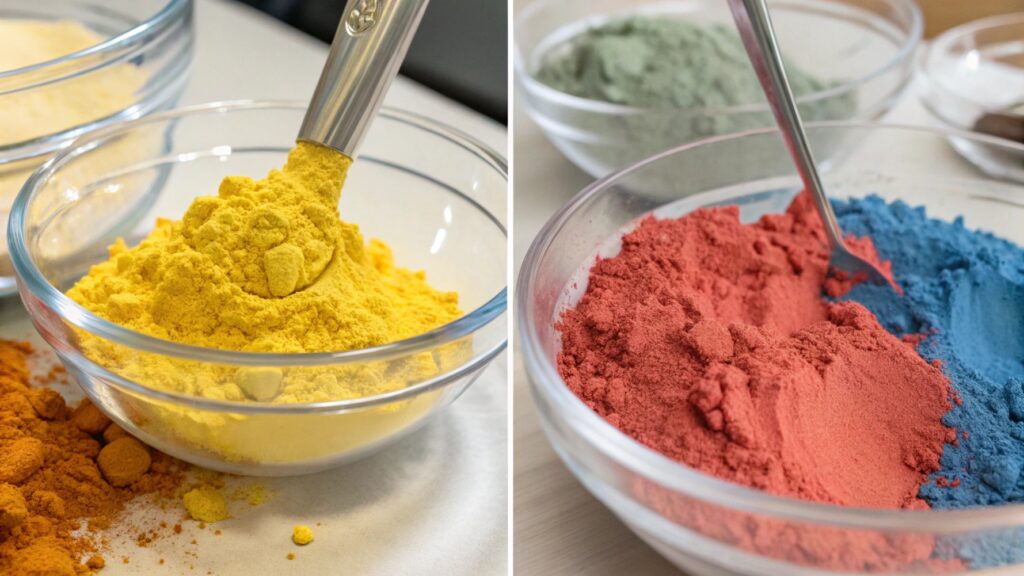
My experience in balloon manufacturing confirms this. We always invest in the best pigments. Cheap pigments are never worth it. They might save money initially. But they cause many problems later. These problems include color shifts and poor batch matching. I have seen entire orders rejected because of poor color matching. This was due to low-quality pigments.
Key Aspects of Pigment Quality for Consistent Coloration
- Purity: Pigments must be clean. They must not have impurities. Impurities can react with the balloon material. This changes the color. Pure pigments give a true color. They keep the color stable over time.
- Particle Size: Pigments are tiny particles. Their size needs to be uniform. If particle sizes vary a lot, even distribution is harder. Large particles can make the color look grainy. Small particles might clump together. Both cause uneven color.
- Color Fastness: This refers to how well a color resists fading. High-quality pigments have good color fastness7. They do not fade easily when exposed to light or air. Poor pigments fade quickly. This makes batches appear inconsistent over time.
- UV Resistance: Balloons are used outdoors. They are exposed to sunlight. UV light can break down pigments. This causes colors to fade or change. Good pigments have high UV resistance8. They keep their color even in bright sun.
- Batch Consistency: Pigment suppliers must provide consistent batches. Each new shipment of pigment needs to match the previous one. If a pigment supplier has poor consistency, our balloons will also have poor consistency. We always test incoming pigment batches for color match. This ensures our final product is uniform.
| Pigment Characteristic | Impact on Color Consistency | Consequence of Low Quality |
|---|---|---|
| Purity | Ensures the true, intended color is achieved without unwanted reactions. | Unforeseen color shifts, dullness. |
| Particle Size | Allows for even dispersion throughout the material. Prevents visual defects. | Grainy appearance, clumping, uneven color distribution. |
| Color Fastness | Maintains color intensity and shade over time and light exposure. | Rapid fading, color degradation when exposed to light or air. |
| UV Resistance | Protects color from degradation caused by sunlight. | Color fading or changing when balloons are used outdoors or exposed to UV light. |
| Batch Consistency | Ensures that the color of one pigment batch matches previous and future batches. | Inconsistent colors across different production runs, making matching difficult for customers. |
How can variations in balloon color indicate underlying material flaws9?
Do you think color variation is just cosmetic? It is not. It often points to hidden problems in the balloon material itself. These flaws can affect performance.
Variations in balloon color often signal underlying material flaws. Inconsistent color density or streaks can indicate uneven material mixing or impurities, which compromise the balloon's durability and overall quality.
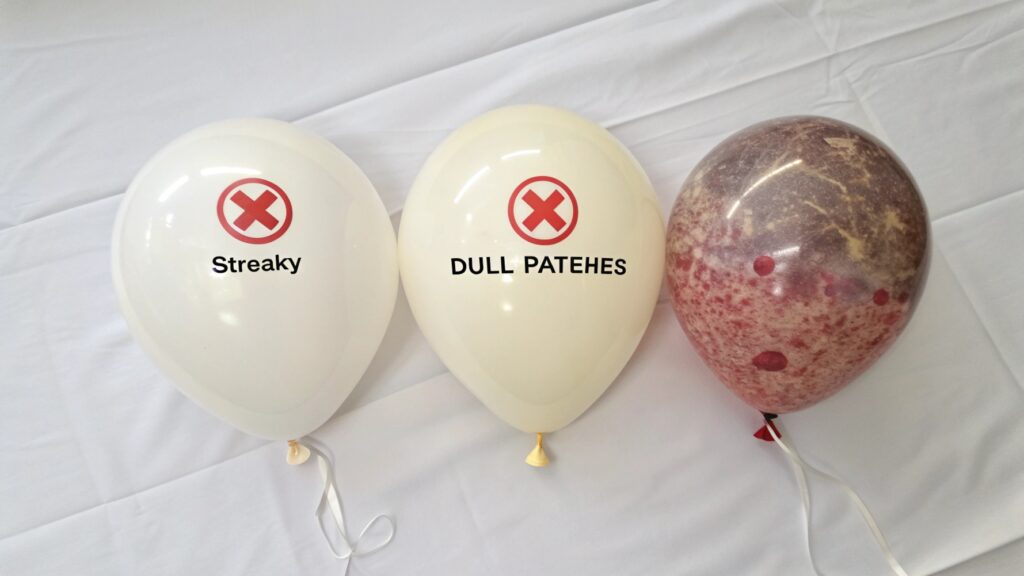
As someone in balloon manufacturing, I can tell you that color is a window. It shows you what is happening inside the material. When I see uneven color, my first thought is, "What went wrong with the material?" Sometimes, it is about the raw latex. Other times, it is about how it was processed. These material flaws mean the balloon might not last. It might pop easily.
Ways Color Variations Indicate Material Flaws
- Patchy or Streaky Color: This is a common sign. It shows that the raw material (latex or foil compound) was not mixed properly. Some areas have too much pigment. Other areas have too little. This also means the base material might be uneven. Some parts could be weaker.
- Dull or Lifeless Color: This indicates issues with material purity or curing. Impurities in the latex can interfere with pigment binding. The color does not shine. It looks flat. Improper curing also leads to dullness. It means the material has not fully transformed. This weakens the balloon.
- Rapid Fading: If a balloon fades quickly, the link between the pigment and the material is weak. This often suggests a problem with the material's composition. It might not be bonding correctly with the colorants. The material degrades fast. This makes the balloon lose its color quickly. It also might lose its strength quickly.
- Inconsistent Transparency: For translucent balloons, uneven color can mean uneven material thickness. Thicker areas appear darker. Thinner areas appear lighter. These thin spots are weak points. They are prone to bursting.
- Visible Specks or Spots: These are small, unexpected color spots. They usually mean impurities in the raw material. Or they mean foreign particles got into the mix. This makes the surface rough. It might also weaken the spot.
| Color Variation Type | Implied Material Flaw | Impact on Balloon Quality |
|---|---|---|
| Patchy/Streaky Color | Uneven material mixing, inconsistent pigment distribution. | Weak spots, uneven elasticity, prone to bursting. |
| Dull/Lifeless Color | Impurities in material, improper curing, poor pigment binding. | Low durability, quick degradation, unattractive appearance. |
| Rapid Fading | Weak pigment-material bond, material degradation issues. | Short lifespan, poor visual appeal. |
| Inconsistent Opacity | Uneven material thickness, non-uniform material density. | Weak points, prone to premature popping. |
| Visible Specks/Spots | Impurities or foreign particles in raw material. | Imperfections on surface, potential weak spots. |
What are the industry standards for color consistency1 in high-quality balloons?
Are there rules for balloon color? Yes, there are industry standards. They ensure high-quality balloons have consistent colors. Knowing these helps you pick the best products.
Industry standards for color consistency1 in high-quality balloons10 require minimal variation within and across production batches. They specify acceptable tolerances. These standards ensure predictable and uniform appearance for professional applications like event decorations and retail displays.
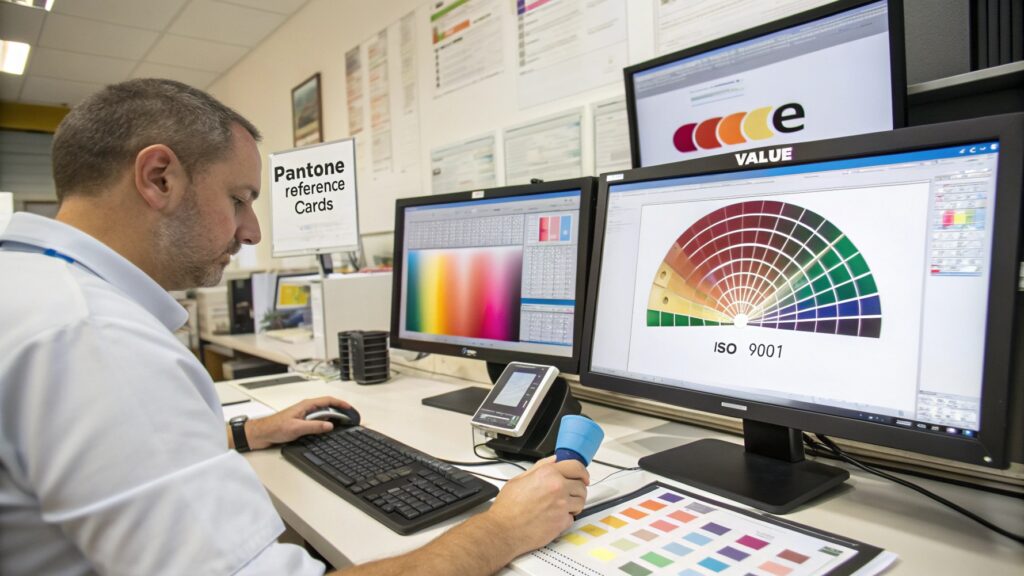
At AIHUA BALLOON, we follow strict standards. Meeting these standards is not easy. It takes precise control and constant monitoring. My team works hard to make sure every balloon meets these high levels. This is why our international retail partners trust us. We know consistent color is not just a nice feature. It is a mark of reliability.
Key Industry Standards and Practices for Color Consistency
- Delta E (ΔE) Values11: This is a metric used to quantify color difference. A lower ΔE value means colors are closer. For balloons, a ΔE below 1.0 is generally excellent for critical applications. A ΔE below 2.0 or 3.0 is acceptable for most decorative uses. We use spectrophotometers to measure ΔE. This gives objective data.
- Reference Swatches: Manufacturers create physical color swatches. These are the master standards. Every production run is compared against these swatches. This happens under controlled lighting. Visual checks are important.
- Batch-to-Batch Consistency: High-quality suppliers guarantee that colors match from one production batch to the next. This means if you buy red balloons today, and more red balloons next month, they will be the same shade of red. This is crucial for large events or continuous stock.
- Light Fastness Requirements: Standards often include how well colors resist fading from light exposure. This is tested using accelerated weathering machines. Balloons are exposed to intense light and UV. This simulates years of sunlight. They must hold their color within certain limits.
- Supplier Certifications: Companies with ISO 9001 certification show a strong quality management system. Sedex certification focuses on ethical supply chains, but it includes process control that supports product consistency. These certifications show a commitment to consistent quality. This includes color.
| Standard/Practice | Description | Benefit for Color Consistency |
|---|---|---|
| Delta E (ΔE) Values | Numerical measurement of color difference. Lower values mean better consistency. | Provides objective, quantifiable proof of minimal color variation. |
| Reference Swatches | Physical samples used as master color standards. | Ensures visual consistency across production runs and batches. |
| Batch-to-Batch Match | Guarantee that colors remain identical across different manufacturing dates. | Critical for large orders and consistent stock over time. |
| Light Fastness Testing | Evaluates how well colors resist fading from light and UV exposure. | Guarantees colors will last and not degrade quickly. |
| Supplier Certifications | ISO 9001 (Quality Management), Sedex (Ethical Practices including process control). | Demonstrates commitment to repeatable quality processes, including color control. |
Conclusion
Color consistency is vital for balloon quality. It reflects good materials and precise manufacturing. Uniform colors ensure consumer satisfaction.
-
Understanding color consistency helps ensure high-quality balloons that enhance visual appeal. ↩ ↩ ↩
-
Learn about the importance of pigment control in achieving vibrant and uniform balloon colors. ↩
-
Discover the essential production processes that ensure the quality and consistency of balloons. ↩
-
Explore how aesthetic appeal influences consumer choices and event decorations. ↩
-
Understanding product reliability can help you choose balloons that last and perform well. ↩
-
Explore the importance of pigment quality in achieving vibrant and lasting balloon colors. ↩
-
Learn about color fastness and its significance in maintaining balloon color over time. ↩
-
Understanding UV resistance can help you choose balloons that withstand outdoor conditions. ↩
-
Identifying material flaws can help you understand potential issues with balloon quality. ↩
-
Explore the characteristics of high-quality balloons to make informed purchasing decisions. ↩
-
Understanding Delta E values can help you assess color consistency in balloon production. ↩
